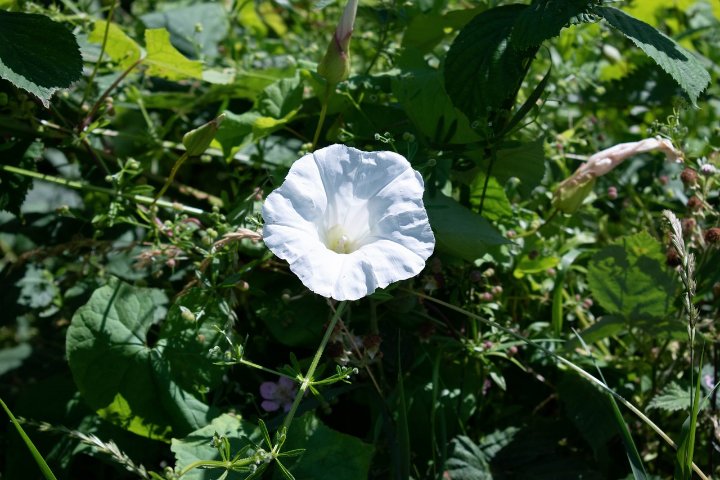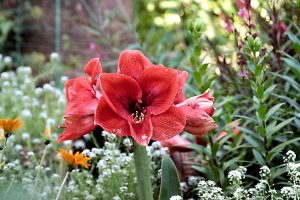Moonflowers, with their ethereal blooms and intoxicating fragrance, are a captivating addition to any garden or landscape. These night-blooming vines unfurl their fragrant white flowers in the evening, filling the air with their sweet scent and attracting pollinators such as moths and bats.
Best Moonflower Varieties
| Image | Name | Rating | Shop |
|---|---|---|---|
 | White Moonflower Seeds |  | |
 | Lavender Moonvine, Moonflower |  | |
 | Fragrant Moonflower Bush |  |
Moonflowers Hardiness Zones
Moonflowers thrive in USDA hardiness zones 10–12, where they can enjoy the warm temperatures and tropical climates typical of these regions. While they may struggle in cooler climates, moonflowers can be grown as annuals or container plants in colder regions, providing they are protected from frost.
How Much Sun Do Moonflowers Need
Moonflowers prefer full sun, requiring at least six to eight hours of direct sunlight per day to thrive. Plant them in a location where they can soak up the sun’s rays and bask in its warmth. Adequate sunlight ensures robust growth and abundant flowering, especially during the summer months.
Moonflowers Soil Requirements
When it comes to soil, moonflowers prefer moist, well-drained soil with a slightly acidic to neutral pH ranging from 6.0 to 7.5. Amending the soil with organic matter, such as compost or peat moss, can help improve soil structure and fertility, ensuring healthy root development and vigorous growth.
Moonflowers Plant Spacing
Moonflower vines can reach heights of 10–15 feet tall and spread 3–6 feet wide, so it’s essential to provide them with ample space to grow and climb. When planting moonflowers, space them accordingly to allow for adequate air circulation and room for growth. Proper spacing ensures that each plant has enough space to develop fully and produce an abundance of flowers.
Moonflowers Temperature Requirements
Moonflowers thrive in the summer warmth, preferring temperatures above 70°F to promote healthy growth and flowering. Plant them after the danger of frost has passed in the spring, and provide consistent temperatures within their preferred range to encourage vigorous growth and abundant blooms.
Moonflowers Fertilizer Requirements
To support healthy growth and flowering, fertilize moonflowers every three to four weeks with a half-strength, high-phosphorus fertilizer. Phosphorus is essential for flower production, promoting robust blooms and vigorous growth. Apply fertilizer according to package instructions, taking care not to over-fertilize, which can lead to excessive foliage growth at the expense of flowers.
Moonflowers Water Requirements
Moonflowers require a moderate amount of soil moisture to thrive, so it’s essential to water them regularly, especially during periods of hot, dry weather. Water the soil around the base of the plants, taking care not to wet the foliage, which can increase the risk of fungal diseases. Allow the soil to dry out slightly between waterings to prevent waterlogged conditions, which can lead to root rot and other moisture-related issues.
Moonflowers Humidity Requirements
Moonflowers thrive in high humidity environments, making them perfect for gardens in tropical and subtropical regions. If you live in a drier climate, consider planting moonflowers near a water source or providing supplemental humidity by misting the foliage regularly. Proper humidity levels ensure healthy growth and abundant flowering throughout the growing season.
Moonflowers Pests and Diseases
While moonflowers are relatively pest and disease-resistant, they can occasionally encounter issues with pests such as aphids and spider mites. Additionally, they may develop black rot, a fungal disease that thrives in warm, humid conditions. Monitor your plants regularly for signs of pest infestations and diseases, and take appropriate measures to control them, such as using insecticidal soaps or fungicides.
In conclusion, growing and caring for moonflowers is a delightful and rewarding endeavor that allows gardeners to enjoy the beauty and fragrance of these enchanting flowers. By providing full sun, moist, well-drained soil, and regular watering and fertilization, you can cultivate healthy and vibrant moonflower vines that add beauty and charm to your garden. With their ethereal blooms and sweet fragrance, moonflowers are sure to become a cherished favorite among gardeners of all skill levels.














